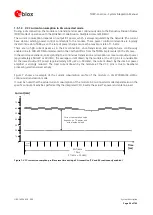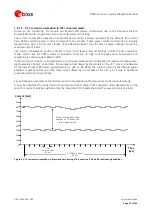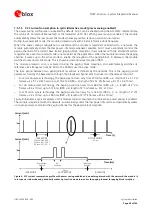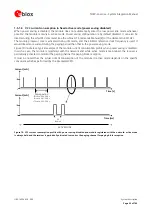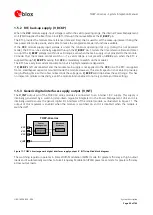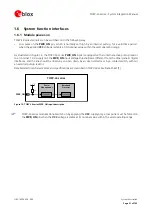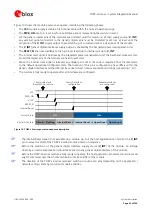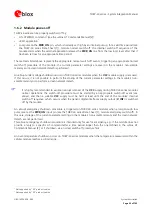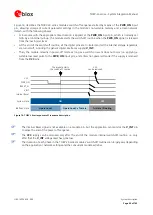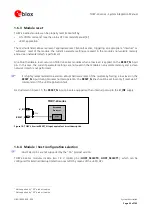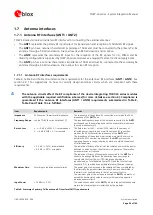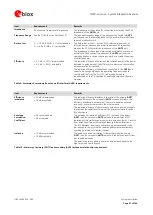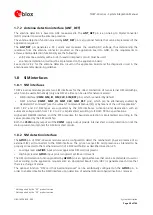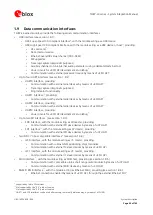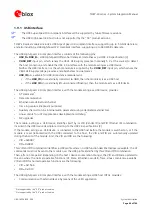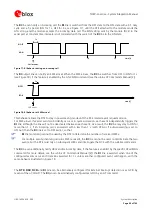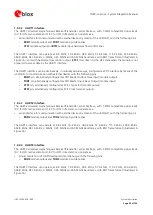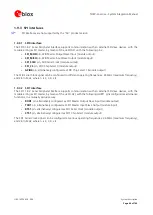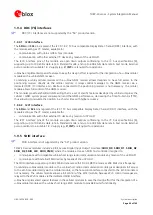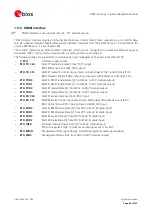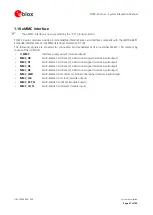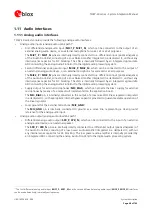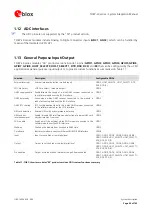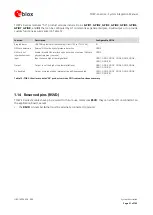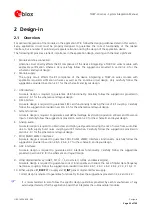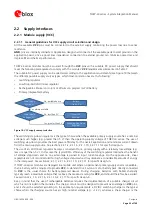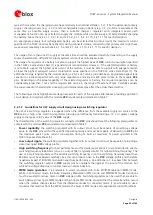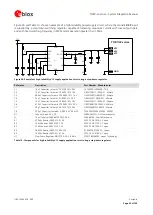
TOBY-L4 series - System Integration Manual
UBX-16024839 - R04
System description
Page 40 of 143
1.9.1
USB interface
The USB Super-Speed 3.0 compliant interface will be supported by future firmware versions.
The USB High-Speed 2.0 host role is not supported by the "50" product versions.
TOBY-L4 series modules include a USB Super-Speed 3.0 compliant interface, supporting up to 5 Gbit/s data rate,
and also including a USB High-Speed 2.0 compliant interface, supporting up to 480 Mbit/s data rate.
The USB High-Speed 2.0 compliant interface consists of the following pins:
USB_D+
/
USB_D–
, USB High-Speed differential transceiver data lines as per
USB 2.0 specification
VUSB_DET
input pin, which senses the VBUS USB supply presence (nominally 5 V at the source) to detect
the host connection and enable the USB 2.0 interface with the module acting as a USB device.
Neither the USB interface, nor the whole module is supplied by the
VUSB_DET
input pin, which senses the
VBUS USB supply voltage presence and absorbs few microamperes.
USB_ID
pin, available for USB ID resistance measurement:
if the
USB_ID
pin is externally connected to GND, then the module acts as a USB host
if the
USB_ID
pin is externally left unconnected (floating), then the module acts as a USB device
The USB High-Speed 2.0 compliant interface, with the module acting as a USB device, provides:
AT command
13
Data communication
Ethernet-over-USB virtual channel
Trace log capture (diagnostic purposes)
Auxiliary channel to tune internal audio parameters using a dedicated external tool
Linux console for uCPU applications development and debug
14
FW upgrades
The module, acting as a USB device, identifies itself by its VID (Vendor ID) and PID (Product ID) combination,
included in the USB device descriptor according to the
USB 2.0 specifications
If the module, acting as a USB device, is connected to the USB host before the module is switched on, or if the
module is reset (rebooted) with the USB connected to the host, the VID and PID are automatically updated
during the boot of the module. First, the VID and PID are the following:
VID = 0x8087
PID = 0x0801
This VID and PID combination identifies a USB profile where no USB function described above is available: the AT
commands must not be sent to the module over the USB profile identified by this VID and PID combination.
Then, after a time period (depending on the host / device enumeration timings), the VID and PID are updated to
the one where the normal operative functions (AT, Data, Ethernet-over-USB, Trace, Linux console) are available.
VID and PID for normal operative functions are the following:
VID = 0x1546
PID = 0x1010
The USB High-Speed 2.0 compliant interface, with the module acting as USB host (OTG), provides:
Communication with external device by means of the uCPU application
13
Not supported by the "00" product version
14
Not supported by the "50" product version

